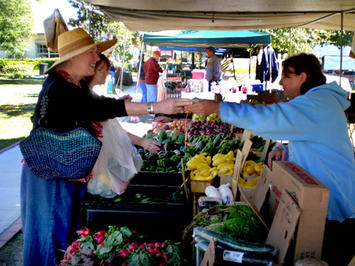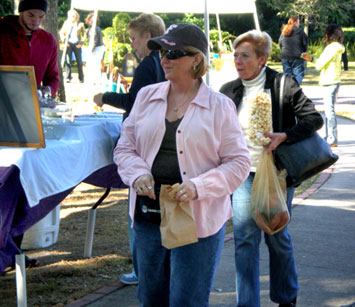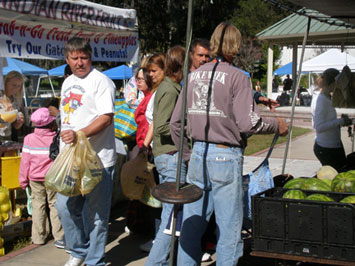
By Richard Reep
Noted architect Daniel Liebeskind, teaching at Yale in the early 1990s, proclaimed “Public space is dead”. A provocative notion at the time, he was simply observing American cultural phenomena, and our evolution away from Main Street into the mall, away from the downtown church to the suburban megachurch, and away from common space into private space. While all this is true, it misses a countercyclical element in our cities, and in the Orlando area, public space is very much alive and assuming a new role in the neighborhoods.
Human social activities still need to take place, and we are surprisingly adaptable when it comes to getting the interaction we need, when we need it. Public space has hosted political, sacred, commercial, and ceremonial activities for the entire history of the city. This recent flight from public to private is due to the perception of personal safety, and the need to conduct social activities in a secure zone. We simply don’t much care whether the backdrop for our social life is a 19th century town square, or a 20th century suburban shopping mall.
Crime rose in the last half of the 20th century beyond the level of comfort for most citizens, and although it receded in the late 1990’s (for reasons yet to be satisfactorily explained), crime has resurged. This year, Orlando jumped from a relatively crime-free status to a position within the top 10 in the country for violent crime, and nearly every neighborhood has experienced an increase in various forms of break-ins, vandalism, and theft. Along with our economic lives, our civic lives seem to be going backward at the present moment.
Thus, private space thrives and public space dies; this has been our only means of control over our personal security. Shopping malls and big box stores are our new Main Streets, and instead of condemning their form, we should be studying them, because they are telling us what people need and crave as part of their daily lives.
In the public arena, cities cope with the crime trend variously, and it is instructive to look at Orlando’s methods in light of its commitment to New Urbanism as a city growth model. Orlando has recently published Crime Prevention Through Environmental Design via a Bureau of Justice Assistance grant. Aimed at both businesses and individuals, the booklet recommends that private outdoor space be well-defined by gates and clear perimeters, and suggests other design elements to reduce the risk of being targeted by criminals.
Much of the booklet makes sense and reinforces strategies such as natural surveillance, target hardening, territorial reinforcement, and access control. The booklet also tries in vain to tie new urbanist ideals to crime prevention. For example, speed tables, a favorite new urbanist device to reduce speeding, are cited as a way to tell “potential offenders they had better think twice before committing a crime.” Whether there is a correlation between speed bumps and safe neighborhoods remains to be seen.
The booklet rightly states that “streets should be designed to discourage cut-through traffic” as a means of natural access control. Ironically, this flies in the face of new urbanist development patterns, which encourage open-ended, straight street grids, and discourage cul-de-sacs as elitist. The practical reality of safety and security necessarily overrides the theory and rhetoric of New Urbanism as it is applied in Orlando.
We continue to evolve into a city that has troubled public spaces and increasing private spaces, much like the rest of the country. While the crime rate has risen suddenly in Central Florida, however, our public space, far from being doomed, is now hosting scenes of new civic involvement.
 The age-old agora, contrary to reports of its death, is actually alive and well. Weekend markets are springing up in public nooks and crannies around the older, urban core, and in the suburban public parks as well. These markets are scenes of a new American involvement with each other, in a manner similar to the traditional European town square and the historical American village green. “Farmer’s Markets,” “Fresh Markets,” and “Weekend Markets” are becoming popular not just in downtown Orlando, but in downtown Winter Park, Maitland, College Park, and surrounding communities. These markets are exciting because they are growing, despite all the forces working against them: crime, internet commerce, and the accelerated kinetic lives we lead in this new millennium. People are finding something important at these small, crowded, open-air market stalls, and it isn’t just good tomatoes.
The age-old agora, contrary to reports of its death, is actually alive and well. Weekend markets are springing up in public nooks and crannies around the older, urban core, and in the suburban public parks as well. These markets are scenes of a new American involvement with each other, in a manner similar to the traditional European town square and the historical American village green. “Farmer’s Markets,” “Fresh Markets,” and “Weekend Markets” are becoming popular not just in downtown Orlando, but in downtown Winter Park, Maitland, College Park, and surrounding communities. These markets are exciting because they are growing, despite all the forces working against them: crime, internet commerce, and the accelerated kinetic lives we lead in this new millennium. People are finding something important at these small, crowded, open-air market stalls, and it isn’t just good tomatoes.
For merchants, they ostensibly cut out the army of middlemen between the customer and contemporary, chain-store retail. Open-air markets are an exciting and interesting alternative to the internet, a medium that prevents direct sampling of a physical, sensual product such as food. And, a visit to the Winter Park Farmer’s Market on any given Saturday would make any mall-store merchant green with envy: hands holding full shopping bags, and lots of them. Business is being done!
 For customers, the thrill of a bargain is supplemented by a sense of community and a shared enjoyment of a vibrant local scene. Maitland, a suburban municipality five miles north of Orlando, recently started its own Farmers’ Market and has already outgrown Quinn Strom Park, and will soon be moving to the larger Lake Lily Park next year. Customers are treated to live music performances, occasional tables of Fresh Art by Maitland Art Center artists, and stalls by masseuses, cheese makers, and ethnic food providers. The informal nature of these markets guarantee spontaneity, an enjoyment of shared community, and an opportunity for relaxed interaction and discourse free of the manipulation of marketers, advertisers, designers, and other enablers of the high art of contemporary Western consumption.
For customers, the thrill of a bargain is supplemented by a sense of community and a shared enjoyment of a vibrant local scene. Maitland, a suburban municipality five miles north of Orlando, recently started its own Farmers’ Market and has already outgrown Quinn Strom Park, and will soon be moving to the larger Lake Lily Park next year. Customers are treated to live music performances, occasional tables of Fresh Art by Maitland Art Center artists, and stalls by masseuses, cheese makers, and ethnic food providers. The informal nature of these markets guarantee spontaneity, an enjoyment of shared community, and an opportunity for relaxed interaction and discourse free of the manipulation of marketers, advertisers, designers, and other enablers of the high art of contemporary Western consumption.
At least in Central Florida, public space is not dead at all; people seek ways to maintain the tradition of the agora, despite assault upon this tradition. Although safety needs have forced us to flee to malls, supermarkets, big box retail, and the internet for our consumer needs, we’ve traded safety and security for spontaneity and deeper interaction. We are ingenious at finding ways around the slick, sophisticated veneer of chain-store commerce for a more visceral sensory and social experience.
In Central Florida, these markets are springing up to provide this, and they reinforce locality and pride in our neighborhoods, for they are a reference that citizens are more and more often using to reinforce their neighborhoods’ identity. If this trend continues, these markets may increase in weekly frequency and broaden their involvement by becoming a forum for public speaking and political dialogue. Public space is alive and well in the new millennium, and its new adaptation to this old use can provide an exciting glimpse into the future.
Richard Reep is an Architect and artist living in Winter Park, Florida. His practice has centered around hospitality-driven mixed use, and has contributed in various capacities to urban mixed-use projects, both nationally and internationally, for the last 25 years.













I'm really impressed by the
I'm really impressed by the persistence with which Orlando has been fighting crime in public areas. Few cities have made such success in that and it makes me proud to live here. The final blow to clime should come from the people though, not from the city. The city has done a lot and I think if people do their best to create neighborhood crime watch groups or at least install a security system in their home, thieves will have to leave our city.
As far as the open markets, they're the best in bringing both great products and interesting social interaction to our society.
growing food closer to home
Aside from creating new, popular, public spaces, open-air food markets also bring the supply and source of food closer to the daily life of the city. This is no bad thing since we are now so removed from the source of good food and the lands in which it is grown. http://davidbarrie.typepad.com
Safety and Cul-de-Sacs
1) It's difficult to discern what CPTED means by "cut through traffic". I personally interpret it in design terms like you are, and that it means there should be fewer "connected" streets and more cul-de-sac developments.
However, the statement is referenced in the same sentence in which other traffic calming techniques are mentioned - so it could be assumed that it is meaning that it wants to promote street character in which automobile traffic speed is limited and cars cutting through should use an arterial road.
2) It has been shown that cul-de-sacs / cut-off streets increase emergency vehicle response times and require more fire stations to be built in order to respond effectively to these inefficient street patterns. There are more safety concerns for cul-de-sacs than connected streets.
Elitist?
Cul-de-sacs aren't discouraged because they're elitist. They're discouraged because they make neighborhoods less walkable.
You are truly an expert at the strawman argument.